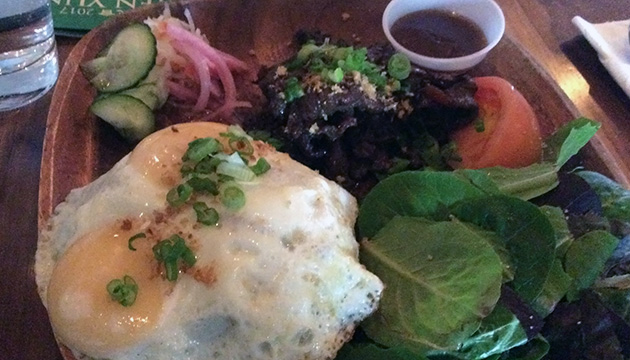In legendary Camelot, they sang about their merry month of May of long ago, but in the Philippines, people are still singing about their own “Mary Month of May” to this day.
In cities and villages throughout the land, Dios Te Salve, Maria (the “Hail Mary” in Spanish) is set to local tunes and sang on the streets at night to accompany a procession in honour of the Blessed Virgin and in churches during the day in a month-long devotion of floral offerings to the Holy Mother. These songs are recited or sung only during these special celebrations in May in the Philippines.
Thus most Filipinos have a fond memory or two from the Maytime of their youth. May is the month for celebrating religion with merriment. It is a month of Marian devotion in the Catholic church in honour of the Virgin Mary as “The Queen of May.” It is when students are on summer vacation and working parents take time off from work to spend time with the family. It is also the time when most tropical fruits and flowers are in season and people have time for excursions to nearby hills of Antipolo or to beach resorts farther away.
Antipolo Pilgrimage
Antipolo, a city 25 kilometres east of Manila, is known as a Catholic pilgrimage site. Our Lady of Peace and Good Voyage (Nuestra Señora de la Paz y Buen Viaje in Spanish), also known as the Virgin of Antipolo and Our Lady of Antipolo (Birhen ng Antipolo in Tagalog), is a 17th-century Roman Catholic wooden image of the Blessed Virgin Mary enshrined in Antipolo’s Cathedral in the Sierra Madre mountains. The image, a Black Madonna, was brought to the country by Governor-General Juan Niño de Tabora from Mexico via the galleon El Almirante in 1626. The statue is one of the most celebrated images of the Blessed Virgin Mary in the Philippines, gaining devotees since the mid-19th century, having been mentioned by the national hero José Rizal in his writings.
After a visit to the Cathedral, devotees throng through the narrow side streets of shops to purchase locally grown fruits like anonas, balimbing, caimito, chico, duhat, kasuy, mabolo, makopa , mangoes, pineapples, santol and sweet sampaloc to take home. Cashew nuts, selling by the kilo, are popular as well as jars of coco jam and bundles of suman – a local delicacy made of glutinous rice steamed in coconut milk and eaten with ripe mangoes.
Flores de Mayo
Flores de Mayo (Spanish for "flowers of May") is a month-long religious festival held in churches. It is more widely observed in towns and villages in the provinces. It is one of the most popular devotions to the Blessed Virgin among the young. In fact, it has became part of Filipino traditions identified with youth, love, and romance because each day of this month is an opportunity for young lovers to make their love bloom along with the flowers they gather for floral offerings in the church.
Starting on the first day of May, a family in the parish is assigned to provide the flowers to be offered to the shrine of the Blessed Virgin in religious rites that afternoon. This sponsoring family is called Hermanos or Hermanas. In towns and villages where flowers are free for the asking, courting young men and women go around in the morning collecting baskets of bougainvillas, cadena de amor, camia, champaca, gumamela, ilang-ilang, kalachuchi, milenguas, rosal and the fragrant sampaguita. They spend the afternoon stringing them into leis or arranging them into colorful bouquets and various shapes of hearts and stars.
At around 5 in the afternoon, the young men bring the flowers to the church. The floral offering begins with the recitation of the rosary. Then the young women, dressed in white and carrying flowers and baskets of petals, march down the center aisle of the church, two by two, and offer the flowers to the image of the Blessed Virgin Mary at the altar. Hymns to the Virgin Mary are sung throughout the offering as a symbol of love, affection and veneration.
“Itong bulaklak na alay ng aming pagsintang tunay
Palitan mo Birheng mahal ng tuwa sa kalangitan ...”
After the floral offerings, the participants gather at the home of the sponsoring family for refreshments of rice cakes, boiled corn or saging na saba, boiled sweet potatoes or cassava, or chicken arroz caldo, followed by singing and merry making. In addition, the Hermanos or Hermanas of the day may give little gifts like stampitas to the participants.
The next day, another family sponsors the festivities and the ritual starts all over again. At the end of the month, the whole town participates in a procession where the statue of the Blessed Virgin Mary, carried only on the shoulders of young men occupies the final spot of the procession surrounded by a choir of young women singing the Blessed Virgin Mary’s praises.
Santa Cruz de Mayo
In cities and towns, the highlight of the May festivities is called Santacruzan, which is in honour of St. Helena, the mother of Constantine the Great – the first Christian emperor, who found the relics of the True Cross or Holy Cross. This is a more elaborate celebration than the Flores de Mayo and is usually held on cities streets. It is more of a civic and social event based on an ancient religious theme.
The Santacruzan starts with a novena to the Blessed Virgin Mary, with the rosary prayer being offered every day for nine days. After the novena, a procession to dramatize the search for the True Cross follows. The procession is joined by young women in elaborate costumes as “Queens” representing allegorical figures like charity, faith, hope; a variety of Marian titles; and Queen Helena, as Reyna Elena. Each “queen” is accompanied by a male consort and an arch decorated with flowers frames each couple. A rondalla, a band of musicians, plays Dios Te Salve Maria while the devotees following the procession carry lit candles and sing along together.
Many movie stars and television personalities usually participate in colorful santacruzan processions sponsored by the government for tourists. The coronation of Reyna Elena, whose status is marked by a crown and a small Cross that she carries, cap the finale of the month-long celebration. The eating and dancing that follow last late into the night.
There may also be games of pabitin where a bamboo frame tied with goodies (candies, fruits, small trinkets, etc.) is slowly jerked up and down teasing the players to grab as many of the goodies as they can. Sometimes the palosebo (the local version of the greasy pole) is also played, where a tall bamboo pole is smeared with grease which young men must climb to get a small red banner or a bag with a prize at the top.
For Canadian Filipinos, the best time to visit the Philippines is in May when Filipinos are in vacation mode, the weather is pleasant, fruits and flowers are in abundance and when festivities in celebration of their religious fervour and native culture are best savoured and enjoyed.
By Eleanor R. Laquian for
The CFNet Editorial Board
Contact us at:










